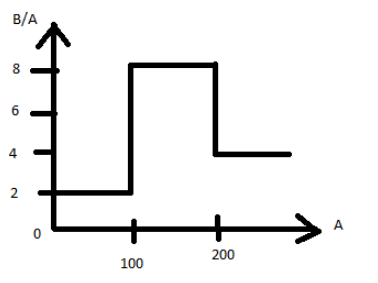
Assume that the nuclear binding energy per nucleus

(A) Fusion of two nuclei with mass numbers lying in the range of
(B) Fusion of two nuclei with mass numbers lying in the range of
(C) Fission of a nucleus lying in the mass range of
(D) Fission of a nucleus lying in the mass range of

Answer
485.4k+ views
Hint:First let us see a bit about nuclear fusion and fission:
The splitting of an atom into two us fission and the combining of two lighter atoms into one is fusion. They are totally different processes.Both fission and fusion are power-producing nuclear reactions, but the methods are not the same. Fission is the separation into the lighter nuclei of a heavy, unstable nucleus and fusion is the phase in which two light nuclei fuse together, producing large quantities of energy. Fission is used because it can be controlled in nuclear power reactors, although fusion is not used to generate power because the reaction is not readily controlled and it is costly to establish the necessary conditions.
Complete step by step answer:
The fact that there is a higher bonding energy in the region between
means that if the atoms produced lies in this area of equilibrium, then the breakup of heavier nuclei or the mixture of lighter nuclei will produce nuclei that are more closely bound.Two atoms with atomic mass number between
For fission atoms with atomic mass number more than
Hence, option D is also correct.
Note:Here we have to carefully observe the atomic numbers range in the graph provided. The stability of the fission and fusion reaction will depend on this graph which also gives us the nuclear binding energy.
The splitting of an atom into two us fission and the combining of two lighter atoms into one is fusion. They are totally different processes.Both fission and fusion are power-producing nuclear reactions, but the methods are not the same. Fission is the separation into the lighter nuclei of a heavy, unstable nucleus and fusion is the phase in which two light nuclei fuse together, producing large quantities of energy. Fission is used because it can be controlled in nuclear power reactors, although fusion is not used to generate power because the reaction is not readily controlled and it is costly to establish the necessary conditions.
Complete step by step answer:
The fact that there is a higher bonding energy in the region between
means that if the atoms produced lies in this area of equilibrium, then the breakup of heavier nuclei or the mixture of lighter nuclei will produce nuclei that are more closely bound.Two atoms with atomic mass number between
For fission atoms with atomic mass number more than
Hence, option D is also correct.
Note:Here we have to carefully observe the atomic numbers range in the graph provided. The stability of the fission and fusion reaction will depend on this graph which also gives us the nuclear binding energy.
Latest Vedantu courses for you
Grade 10 | MAHARASHTRABOARD | SCHOOL | English
Vedantu 10 Maharashtra Pro Lite (2025-26)
School Full course for MAHARASHTRABOARD students
₹31,500 per year
Recently Updated Pages
Master Class 12 Business Studies: Engaging Questions & Answers for Success

Master Class 12 English: Engaging Questions & Answers for Success

Master Class 12 Social Science: Engaging Questions & Answers for Success

Master Class 12 Chemistry: Engaging Questions & Answers for Success

Class 12 Question and Answer - Your Ultimate Solutions Guide

Master Class 12 Economics: Engaging Questions & Answers for Success

Trending doubts
Give 10 examples of unisexual and bisexual flowers

Draw a labelled sketch of the human eye class 12 physics CBSE

Differentiate between homogeneous and heterogeneous class 12 chemistry CBSE

Write a short note on Franklands reaction class 12 chemistry CBSE

Differentiate between insitu conservation and exsitu class 12 biology CBSE

What are the major means of transport Explain each class 12 social science CBSE




